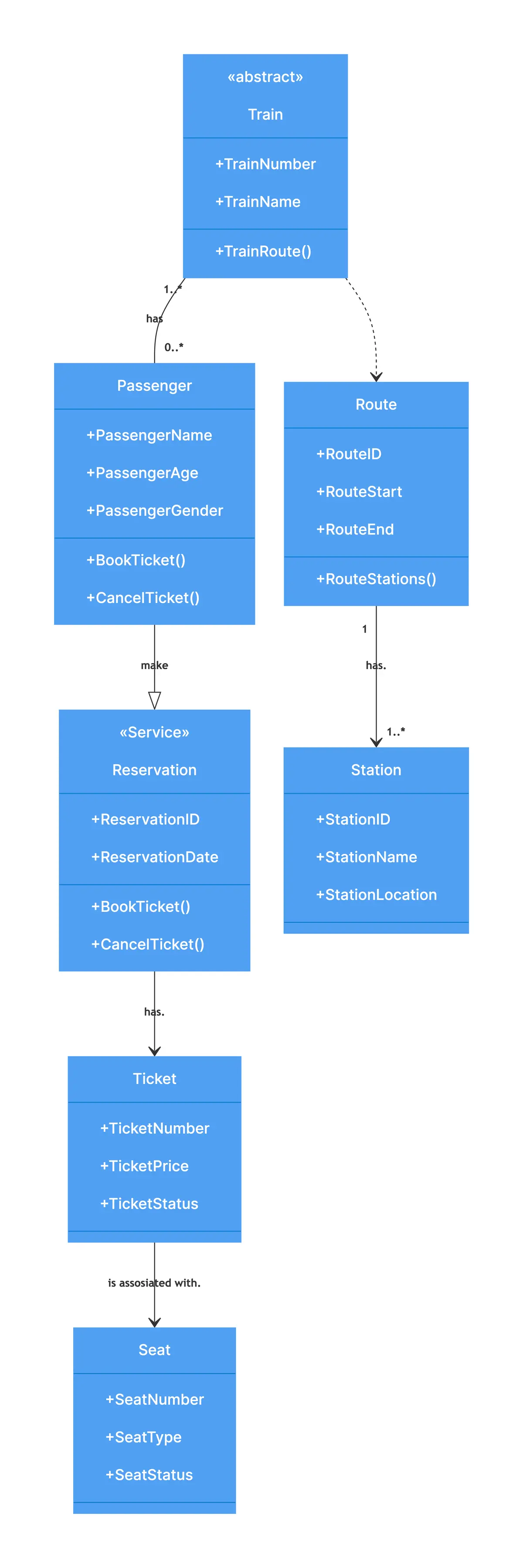This railway reservation system's class diagram models entities like Train, Passenger, Reservation, Ticket, Seat, Route, and Station. Trains have abstract attributes like TrainNumber and TrainName, while Passengers can book or cancel tickets. Reservation manages bookings with a unique ID and date, linked to Tickets and Seats. Routes consist of Stations, with a relationship indicating a route having multiple stations. Trains can have multiple passengers, and each ticket is associated with a seat, showcasing the connections between these entities in the railway system.

Edit this diagram in Gleek
Railway reservation system diagram code in Gleek
Train:abstract
+TrainNumber
+TrainName
+TrainRoute()
Passenger
+PassengerName
+PassengerAge
+PassengerGender
+BookTicket()
+CancelTicket()
Reservation:service
+ReservationID
+ReservationDate
+BookTicket()
+CancelTicket()
Ticket
+TicketNumber
+TicketPrice
+TicketStatus
Seat
+SeatNumber
+SeatType
+SeatStatus
Route
+RouteID
+RouteStart
+RouteEnd
+RouteStations()
Station
+StationID
+StationName
+StationLocation
Train{1..}-has-{0..}Passenger
Train-.->Route
Passenger-make-*>Reservation
Reservation-has.->Ticket
Ticket-is associated with.->Seat
Route{1}-has.->{1..*}Station
About class diagrams
Class diagrams are used in software engineering to describe the structure of a system. A class diagram uses Unified Modeling Language (UML) to show the classes, attributes, methods (or operations), and their relationships to each other in the system. Class diagrams prove valuable in object-oriented modeling. Class diagrams can be used to model the data structure or to design a system in detail.
Similar class diagram examples
Library management system class diagram
Online shopping system class diagram
Restaurant management system class diagram
Order processing system class diagram
User management system class diagram
Video rental system class diagram
Animal inheritance class diagram
Course registration system class diagram